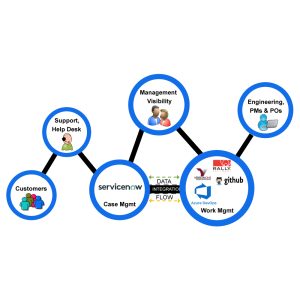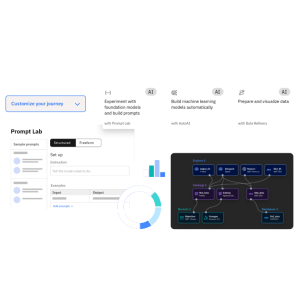Businesses are under constant pressure to improve efficiency, reduce costs, and enhance customer experiences. Intelligent automation has emerged as a key enabler in achieving these goals by combining artificial intelligence (AI) with automation technologies. IBM Business Automation Workflow (BAW) offers a robust platform to implement intelligent automation, integrating workflow automation and automated decision making to streamline business processes.
This comprehensive guide provides a detailed roadmap for implementing intelligent automation using IBM BAW, helping organizations harness the full potential of their digital transformation initiatives.
Understanding Intelligent Automation
What is Intelligent Automation?
Intelligent automation refers to the integration of AI technologies, such as machine learning and natural language processing, with automation tools to create smarter workflows. It enables systems to learn from data, make decisions, and adapt to changing circumstances without human intervention.
Benefits of Intelligent Automation
- Enhanced Efficiency: Automates repetitive tasks, freeing up human resources for more strategic activities.
- Improved Accuracy: Reduces errors associated with manual processes.
- Scalability: Easily scales operations without proportional increases in resources.
- Better Decision Making: Utilizes data-driven insights for informed decisions.
Overview of IBM Business Automation Workflow
IBM Business Automation Workflow (BAW) is a unified platform that integrates business process management and case management capabilities to streamline operations. It enables organizations to design, execute, and monitor workflows, facilitating workflow automation that enhances efficiency and consistency across various business processes. By automating routine tasks, BAW reduces manual effort and minimizes errors, leading to improved productivity and faster turnaround times.
A key feature of IBM BAW is its support for intelligent automation, combining workflow automation with automated decision making. Through integration with decision management tools like IBM Operational Decision Manager (ODM), BAW allows for the incorporation of business rules and AI models directly into workflows. This ensures that decisions are consistent, auditable, and aligned with organizational objectives, reducing the need for human intervention and accelerating process execution. Additionally, BAW’s analytics and monitoring tools provide real-time insights into process performance, enabling continuous improvement and adaptability to changing business needs.
Key Features
- Workflow Automation: Design and automate business processes to improve efficiency.
- Case Management: Handle unstructured processes that require human judgment.
- Integration Capabilities: Connect with various systems and data sources.
- Analytics and Reporting: Gain insights into process performance and outcomes.
Step-by-Step Guide to Implementing Intelligent Automation with IBM BAW
Step 1: Define Objectives and Scope
Begin by identifying the processes that will benefit most from automation. Set clear objectives, such as reducing processing time, minimizing errors, or improving compliance. Determine the scope of automation, considering factors like process complexity, variability, and impact on stakeholders.
Step 2: Analyze and Model Processes
Use IBM BAW’s process modeling tools to map out current workflows. Identify bottlenecks, redundancies, and decision points. This analysis will help in designing optimized workflows that incorporate intelligent automation and automated decision making.
Step 3: Design Automated Workflows
Leverage IBM BAW’s design environment to create automated workflows. Incorporate:
- Workflow Automation: Automate repetitive tasks and standard processes.
- Decision Services: Implement business rules and AI models for automated decision making.
- Integration Points: Connect with external systems, databases, and APIs.
Step 4: Develop and Test
Develop the automated workflows using IBM BAW’s development tools. Conduct thorough testing to ensure that the workflows function as intended and that automated decisions align with business rules and objectives.
Step 5: Deploy and Monitor
Deploy the automated workflows into the production environment. Utilize IBM BAW’s monitoring tools to track performance, identify issues, and gather data for continuous improvement.
Step 6: Continuous Improvement
Regularly review the performance of automated workflows and decision-making processes. Use analytics to identify areas for enhancement and adapt to changing business needs.
Best Practices for Successful Implementation
- Stakeholder Engagement: Involve all relevant stakeholders throughout the implementation process to ensure alignment and buy-in.
- Change Management: Prepare the organization for changes in processes and roles due to automation.
- Training and Support: Provide adequate training for users and establish support mechanisms for ongoing assistance.
- Governance: Establish governance structures to oversee automation initiatives and ensure compliance with policies and regulations.
Implementing intelligent automation with IBM Business Automation Workflow enables organizations to streamline operations, enhance decision-making, and achieve greater agility. By following this step-by-step guide and adhering to best practices, businesses can successfully harness the power of workflow automation and automated decision making to drive digital transformation.




